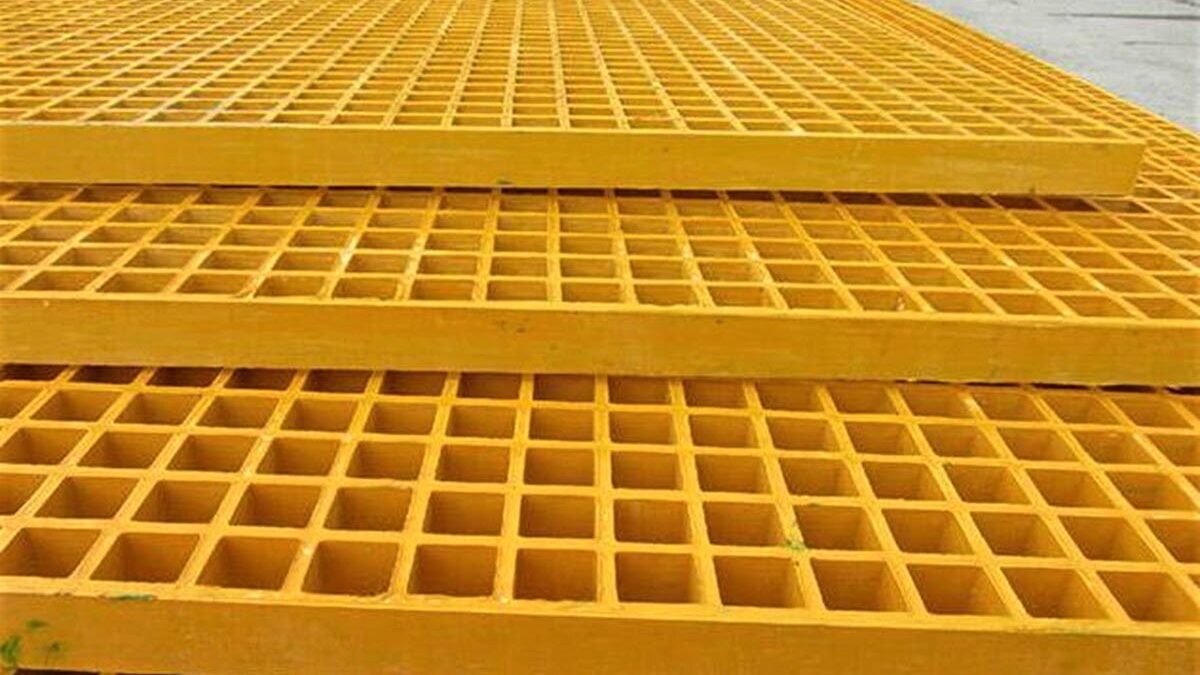FRP Grating is also known as Fiberglass Reinforced Plastic Grating or Fiberglass Grating. It is a composite material made of a resin and fiberglass matrix. Since FRP grating does not rust like steel grating, it is used in corrosive conditions to save money on maintenance.
There’s a lot to learn about FRP grating – there’s a lot of dense knowledge online about what it is and which conditions are better suited for it. It can be challenging to determine which knowledge is most important to your needs.
FRP gratings are increasingly replacing traditional materials, and major asset owners are encouraging creativity and slowly expanding their use in various applications. These have been proven to withstand corrosion and are significantly impact resistant by mixing fiberglass rovings with a thermosetting resin. New uses of FRP gratings are coming up every day. They meet the exact load specifications as steel while being more impact resistant.
Difference Between Pultruded FRP Grating and Molded FRP Grating
In Molded FRP Grating, the horizontal and vertical layers of liquid resin. Continuous fiberglass rovings in molded FRP grating form a mesh. It’s made in an extensive metal mold, as the name implies.
Cut-outs to make space for pipework or traverse complicated flooring configurations don’t need to reinforce it because of the multi-directional power of molded FRP grating. Molded FRP also has the advantage of being available in standard sizes that can be ordered in bulk and stored until required.
Because of the bidirectional strength of this form of grating, we can make cutouts in the panel around the opening without the need for additional support. It can also penetrate through pipes and other forms of equipment. It has the best chemical resistance and tolerance for any fiberglass grating.
Manufacturing Pultruded FRP grating is different than molded FRP grating. It pulls the resin and glass fibers through a series of steps to create a new composite material. It does not require the use of a mold, allowing for greater versatility in the creation of various shapes and sizes. And there’s usually less waste. The glass to resin ratio of pultruded FRP grating is higher, which increases its strength and span capacity.
It protects the fibers by putting them in resin and covering them in a surface cover. It allows the resin to penetrate between the glass fibers and satisfy the exterior part of the bar. The strength of this form of grating is unidirectional.
Features Of FRP Grating
FRP grating is fireproof, non-conductive, and lightweight, making it a standard grating option for industrial structures. It also has various other applications, including fire escapes, platforms, drain covers, protective shields, walkways, docks, and trench covers. People often use FRP for floor grating, and because of its lightweight, it is easier to mount than metal grating. The installation does not necessitate the use of heavy machinery.
● Low weight and high strength
FRP gratings have a lot of elasticity, so they’re typically built using deflection calculations. In general, the FRP sections are much lighter than their metal equivalents.
● Corrosion-resistant
Plastic gratings have a much higher corrosion resistance than steel or aluminum gratings. As a result, these have become the preferred commodity in corrosive environments such as chemical plants, saltwater or salty environments, wastewater treatment plants, and so on.
● Nature is non-conducive
FRP gratings are suitable for electric switch rooms, control rooms, and other areas due to their non-conductive (dielectric) nature. Since FRP does not reflect electromagnetic radiation, it decreases the risk of electric shock. This property also makes it ideal for transmitting devices such as microwaves and radar installations.
● Ideal for use in locations where hot work is prohibited
FRP grating is best for use in areas with flammable liquids, fumes, dust, and other contaminants. Since cutting and working on FRP grating produces no sparks of any kind, the risk of ignition is significantly less.
● Longevity
FRP grating is uncolored and self-pigmented. FRP grating is non-corrosive and straightforward to maintain.
Conclusion
Fiberglass grating may be used for various purposes, including walkways, platforms, protective shielding, machinery housings, raised floors, and stairways. FRP grating is standard because of its low maintenance cost and unparalleled resilience. It comes in square and grid patterns. Unlike metal gratings, which can have a longer product life cycle in some settings, fiberglass grating is corrosion and rust-free, making it more cost-efficient. Fiberglass gratings are also resistant to chemical attacks, ensuring their long-term longevity. FRP is ideal for corrosive environments and provides excellent value for money.
Bottling lines, food processing plants, lift stations, industrial aquariums, lube oil factories, plating shops, beer canning facilities, chemical plants, and pulp and paper plants are among the industries that use Fiberglass Grating.


